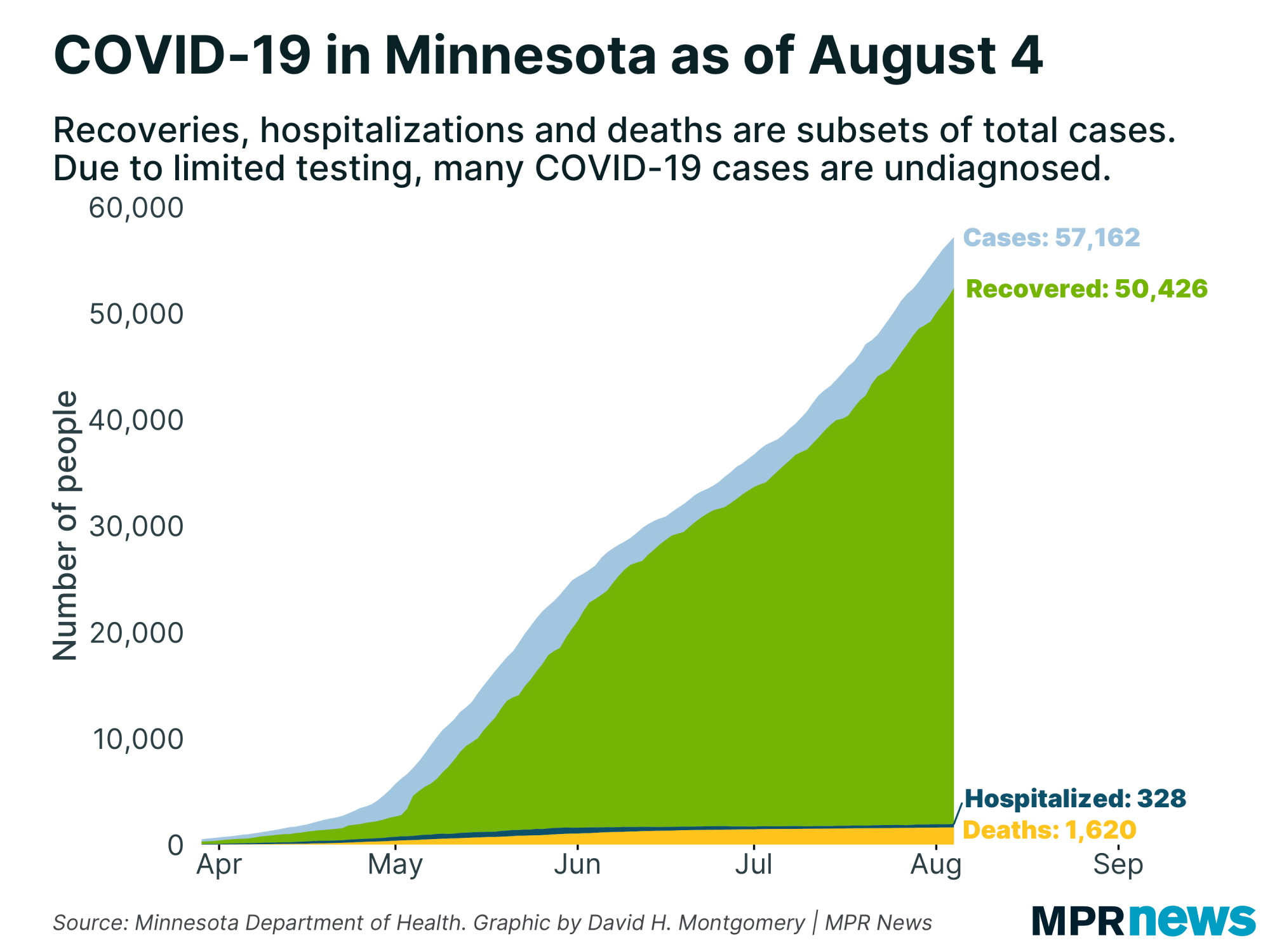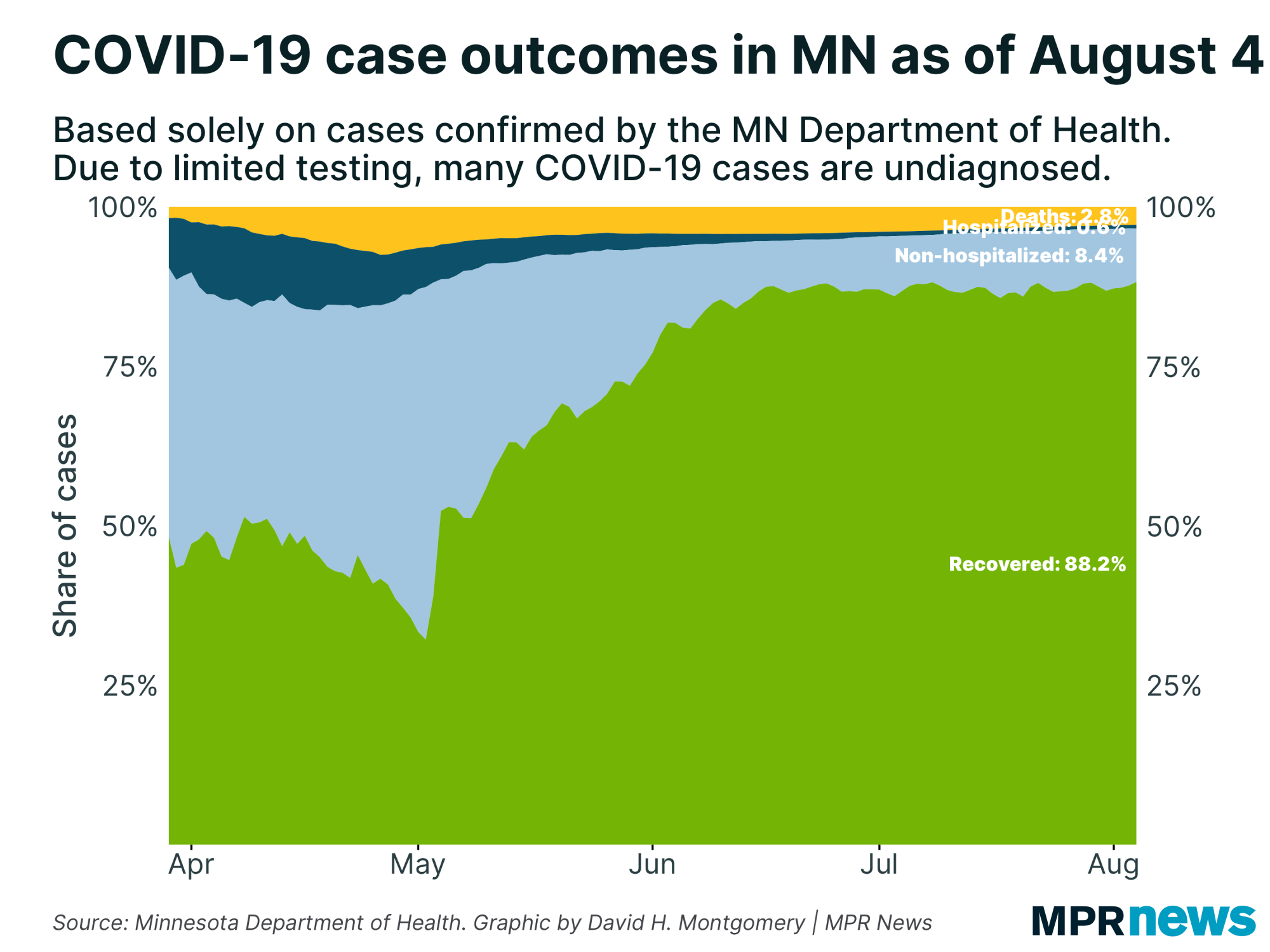May 30 update on COVID-19 in MN: Death toll surpasses 1K, more cases expected from protests

Go Deeper.
Create an account or log in to save stories.
Like this?
Thanks for liking this story! We have added it to a list of your favorite stories.
Updated: 12:33 p.m.
Minnesota hit another grim milestone as the state reported more than 1,000 deaths tied to COVID-19 on Saturday. As massive protests over the killing of George Floyd continue to rage in the Twin Cities, health officials this week said they’re expecting a spike in cases stemming from the gatherings.
The number of Minnesotans currently in intensive care rose to 263 — a new daily high in the pandemic — even as total daily hospitalizations dipped to 589. Health Commissioner Jan Malcolm recently noted that intensive care beds were filling up in the Twin Cities metro area.
Officials continue to pay close attention to the daily intensive care counts, a key metric, as they work to manage the spread of the disease so it doesn’t overwhelm the state’s health care system.

Malcolm said that while she understands the pain and anger people are feeling over Floyd’s death while in Minneapolis police custody and respects their desire to protest, she’s concerned that people gathering in the streets are at risk of getting the virus and transmitting it.
Turn Up Your Support
MPR News helps you turn down the noise and build shared understanding. Turn up your support for this public resource and keep trusted journalism accessible to all.
“I’m understanding the forecast is for very large protests this weekend, with a lot of people coming in from across the state and around the country and gathering in large groups,” she said earlier in the week. “That’s almost sure to have an impact on furthering spread.”
Malcolm reiterated her plea for people to wear masks and socially distance but acknowledged doing those things will be very difficult in the situation that’s playing out in Minneapolis and St. Paul.

‘Measure of success’
Asked whether she was happy so far with the state's “battle plan” strategy to stop the spread of the virus in long-term care facilities, Malcolm said there are some emerging bright spots in the numbers.
She said a few facilities have no cases at all, and roughly half that do have cases have only one or two. And, over half of those facilities no longer have any cases.
In the larger facilities that have had a lot of cases, Malcolm said a third of them have had no new cases in a week.
"That, too, is a measure of success,” she said, “How well are facilities able to manage cases and how good a job are we doing in supporting them in doing that."
Malcolm acknowledged that the number of deaths in long-term care facilities is unacceptably high, but also suggested that Minnesota may be posting higher numbers in this area because the state is counting these deaths differently from other states.
She noted that other states don't count someone from a long-term care facility who dies of COVID-19 in a hospital as a "long-term care facility death." Minnesota does.
Developments from around the state
Meatpacking hot spots remain
Many of the recent outbreaks outside the Twin Cities metro area are focused around meatpacking plants. Officials have intensified testing in those hot spots, uncovering more infections.
In southwestern Minnesota’s Nobles County, where an outbreak hit Worthington’s massive JBS pork plant, about 1 in 15 people have tested positive for COVID-19. In mid-April, there were just a handful of cases. By Saturday, there were 1,512 confirmed cases, although the numbers are rising at a much slower rate than in previous weeks.
The JBS plant shut on April 20 but has since partially reopened with expanded hygiene and health monitoring measures.
Similar problems have been reported in Stearns County, where COVID-19 cases tied to two packing plants — Pilgrim’s Pride poultry plant in Cold Spring and Jennie-O Turkey in Melrose — have skyrocketed.
An undisclosed number of workers at both plants have tested positive for the virus. There were about 55 confirmed cases in Stearns County two weeks ago. By Saturday, confirmed cases were at 2,014 with 13 deaths.
Kandiyohi County in west-central Minnesota is also seeing cases continue to climb more than a month after officials with the Jennie-O turkey processing plant there said some employees had tested positive for the coronavirus. The county had confirmed three COVID-19 cases then.
On Saturday, the Health Department reported 490 people have now tested positive.
While the counts in those counties are high relative to their population, officials say the growth in new cases in those areas appears to be stabilizing.
Top headlines
Contact tracers key to slowing the spread of COVID-19. Meet one of them: Effective testing and contact tracing are considered critical components of managing the spread of COVID-19. The job of contact tracing can mean long hours and stressful conversations.
COVID-19 in Minnesota
Data in these graphs are based off Minnesota Department of Health cumulative totals released at 11 a.m. daily. You can find more detailed statistics on COVID-19 at the Health Department website.
The coronavirus is transmitted through respiratory droplets, coughs and sneezes, similar to the way the flu can spread.
Government and medical leaders are urging people to wash their hands frequently and well, refrain from touching their faces, cover their coughs, disinfect surfaces and avoid large crowds, all in an effort to curb the virus’ rapid spread.


